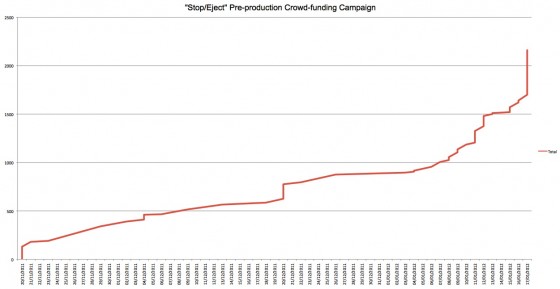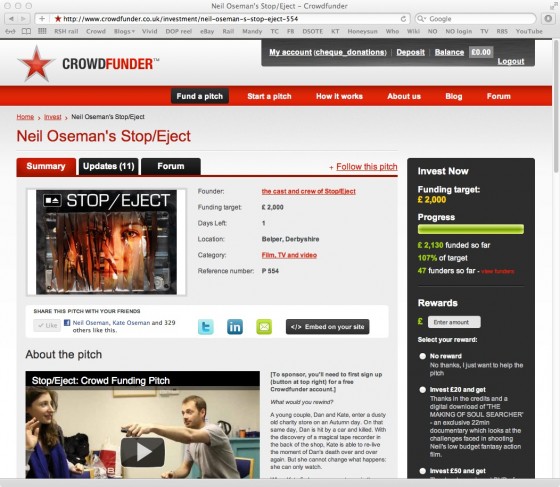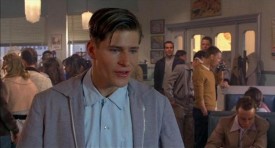Like I said in part one, when you’re running a crowd-funding campaign you wake up every morning wracking your brains for some new way of encouraging donations today. In this post I’m going to look at all the things we did to promote the campaign.
Here are the top three things that led to donations, as far as I can tell:
- Emails to everyone in my address book
- An average of at least one Facebook post a day
- Appearance on Midlands Today
- Posted weekly podcasts during the first half of the campaign – on Facebook, my blog, the Crowdfunder page and my YouTube channel
- Set up a Facebook page
- Tweeted a lot
- Linked to the campaign page from both my websites and my most popular YouTube videos
- Set up a Stop/Eject iTunes podcast and put the pitch video on my existing The Dark Side of the Earth podcast feed too
- Posted on Shooting People a few times
- Spoke about it at Herefordshire Media Network‘s December social (at least one donation came out of this)
- Plugged it at an open mic film screening in Birmingham
- Blogged regularly about it
- Sent press releases to three local papers (at least two of which were published)
- Created “How to Make a Fantasy Action Movie for £28,000” and offered it as an extra reward
- Posted Sophie’s storyboards online
- Promoted my most popular YouTube video on Facebook and Twitter – after annotating it with a link to the Stop/Eject pitch video
- Put poster concepts up on Facebook and encouraged feedback
- Offered KatieDidOnline homeware gifts as extra rewards, blogging about it on Katie’s site too
- Got Matt Price to mention me twice on Purple Radio
- Posted the “Be Part of the Dream” video towards the end of the campaign
I found some websites and Facebook groups for audio cassette enthusiasts and some others for fans of time travel fiction, but my attempts to infiltrate them weren’t successful.
Places we asked to mention the campaign or spread the word, but we couldn’t get them to answer our messages:
- Several popular indie filmmakers’ websites
- Certain regional screen agencies who shall remain nameless
- Local radio
I was particularly disappointed that none of the filmmakers were able to give even a brief mention to the project, especially as I sent them free invites to “How to Make a Fantasy Action Movie…” – the idea being that they would watch it, see what a unique and valuable resource it is for indie filmmakers and encourage their readers to donate in order to see it too. I’m sure these people get far more requests to promote crowd-funding campaigns than they could ever grant, but I felt sure that “How to Make…” would give us the edge.
To end this post on a more positive note, I must mention the brilliant Mike Rhodes who seemed to work like a demon promoting the campaign on Twitter, Facebook and anywhere else he could. Cheers, Mike!
In the final part of this evaluation I’ll be looking at the rewards we offered and the crowd-funding platform we chose. That should probably have been the first part. Whoops.










